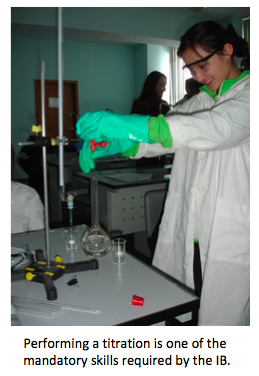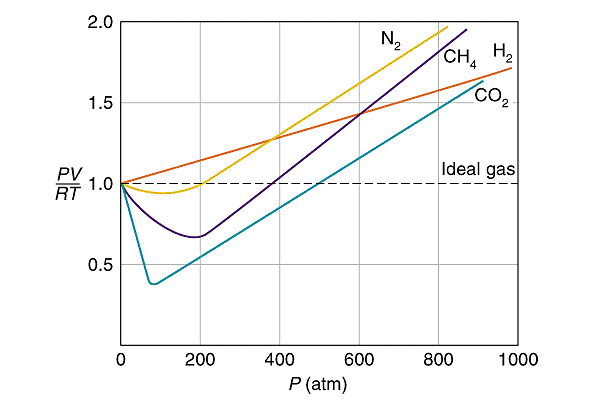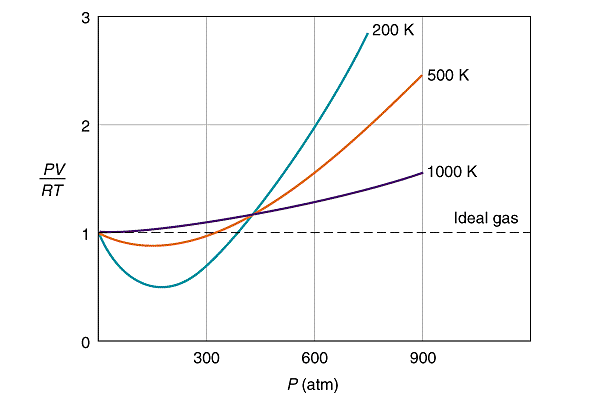1.3 Reacting masses and volumes
Written specifically for students to provide help and support for the IB Diploma chemistry programme this page provides full coverage of the syllabus content of Topic 1.3 Reacting masses and volumes. It encourages you to think critically and provides many questions with full worked answers so that you can monitor and improve your knowledge and understanding.


 Learning outcomes
Learning outcomes
 After studying this topic you should be able to:
After studying this topic you should be able to:
Understand:
- reactants can be either limiting or excess.
- the experimentally obtained yield can be different from the theoretical yield.
- Avogadro’s law enables the mole ratio of reacting gases to be determined from the measured volumes of the gases.
- the molar volume of an ideal gas is a constant at specified temperature and pressure.
- the molar concentration of a solution is determined by the amount of solute and the volume of solution.
- a standard solution is one of known concentration.
Apply your knowledge to:
- solve problems relating to reacting quantities, limiting and excess reactants, theoretical, experimental and percentage yields.
- calculate reacting volumes of gases using Avogadro’s law.
- solve problems and analyse graphs involving the relationship between temperature, pressure and volume for a fixed mass of an ideal gas.
- solve problems relating to the ideal gas equation.
- explain the deviation of real gases from ideal behaviour at low temperature and high pressure.
- obtain and use experimental values to calculate the molar mass of a gas from the ideal gas equation.
- solve problems involving molar concentration, amount of solute and volume of solution.
- use the experimental method of titration to calculate the concentration of a solution by reference to a standard solution.
Relationships & vocabulary
Nature of Science
Evidence for scientific theories depends upon making careful observations. Avogadro’s initial hypothesis is a good example of this. The discovery of the first noble gas, argon, is another good example. In 1894 Lord Rayleigh gave a lecture to the Royal Society in which he stated that the density of nitrogen prepared from chemical reactions was 1.2505 g dm-3 whereas the density of nitrogen obtained from air by removing oxygen, carbon dioxide and water vapour had the value of 1.2572 g dm-3.
Based on this very slight difference in the measured densities, William Ramsey hypothesised that air must contain another unreactive gas that is heavier than nitrogen. Rayleigh and Ramsey then went on to isolate and identify argon.
International-mindedness
The SI unit of pressure is the Pascal (Pa), N m-2, but many other units remain in common usage both by scientists and non-scientists in different countries. Among them are atmosphere (atm), millimetres of mercury (mm Hg), Torr, bar and pounds per square inch (psi). The bar (1.00 x 105 Pa) is now widely used as a convenient unit, as it is very close to 1 atm and many weather maps show the pressure in millibars. The SI unit for volume is m3, although litre (dm3) is very commonly used.
For examples and more links to International mindedness, Theory of knowledge, utilization etc. see separate page which covers all of Topic 1: Stoichiometric relationships.
Vocabulary
| theoretical yield | limiting reagent | percentage yield | Avogadro's law |
| ideal gas | Celsius | Kelvin |
Learning slides
You can use this slide gallery for learning or for reviewing concepts and information. It covers all the key points in the syllabus for this sub-topic.
Something to think about
When solving many problems in physics at IB Diploma level it is usual to ignore friction. In a similar way when solving problems with gases chemists often tend to treat all gases as if they behave like ideal gases and ignore the fact that they do not. How valid is this assumption?


Pressure versus PV/RT for (a) real gases (on the left) at a fixed temperature and (b) nitrogen (on the right) at different temperatures
The closer the gas is to being a liquid then the less it behaves like a real gas This is because the particles themselves are moving slower, they are more closely spaced and they take up more of the ‘empty’ volume of the gas. Hence at high pressures and low temperatures there is considerable deviation from ideality. This can be seen from the two graphs. This deviation from ideal gas behaviour is on the syllabus (see 'Learning outcomes' above). I think from a TOK standpoint you should be aware that you are making this assumption when dealing with real gases and be able to deduce from simple kinetic theory that a real gas will behave most like an ideal gas at low pressures and high temperatures.
As an aside you might question why the graphs do not go through the origin? I understand that PV = nRT so when n = 1 mol PV/RT should be equal to 1 but when P = zero then PV/RT should be zero too? But I suppose when P = zero then V = infinity and zero multiplied by infinity can be anything you like. I guess I just do not understand mathematics!
Test your understanding of this topic
(Note that your teacher may have restricted your access to some or all of these questions and worked answers if they are going to use them as a class test or set them as an assignment.)
For ten 'quiz' multiple choice questions with the answers explained see MC test: Reacting masses & volumes.
For short-answer questions see Reacting masses and volumes questions.
More resources
1. If you are having problems with titartion calculations this simple video takes you through the process stepwise and gives you several examples to practise with.
2. A video from Mark Rosengarten which outlines ideal gas behaviour and puts it all to music. You might enjoy it.
3. A handy calculator for all gas law calculations.
4. For an explanation of ppm and a practical 'utilization' see my blog on Malt whiskey and ppm.

 IB Docs (2) Team
IB Docs (2) Team 


























